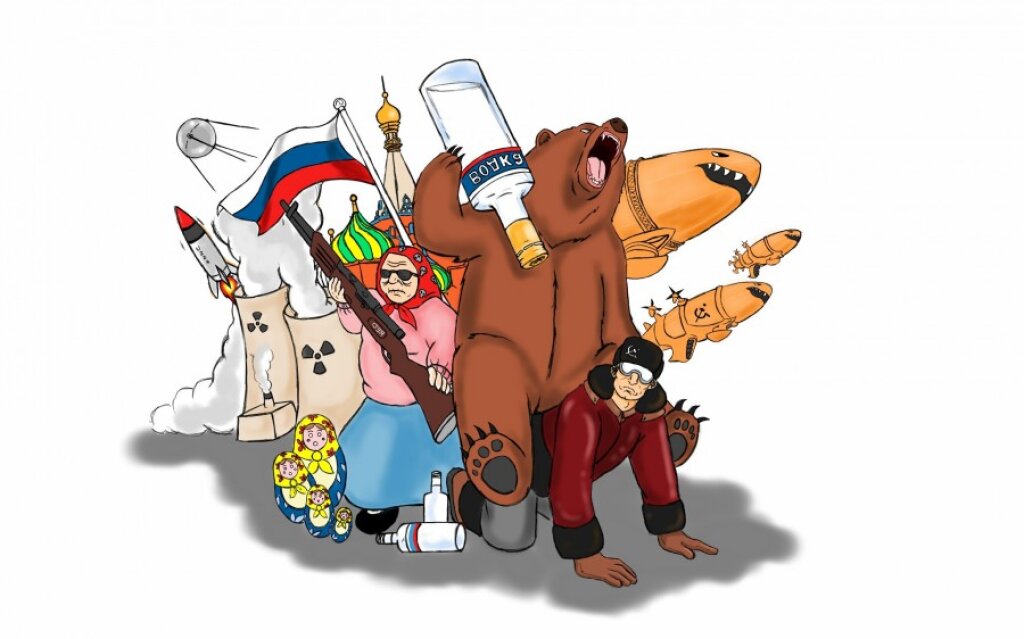The Jordan Center stands with all the people of Ukraine, Russia, and the rest of the world who oppose the Russian invasion of Ukraine. See our statement here.
Irina Meier is Lecturer of Russian at the University of New Mexico. Her research interests focus on cultural studies, including Russian terrorism from the nineteenth century to the present; women’s issues; and postcolonial collective memory in Chechen culture, Russian cinema, and Russian immigration.
Above: Nikita Mikhalkov as the treacherous General Pozharsky in Filipp Yankovsky's State Counsellor (2005)
Almost every political regime in Russian history has had to contend with the issue of Russian national identity to serve its political and cultural goals. Since the advent of film, Russia's rulers have deployed the silver screen to reconstruct the past in accordance with their desired political agenda, disseminating the resulting metanarratives to a broad and receptive public.
Russian revolutionary terrorism is a perennial subject for historical reconstruction, receiving a wide variety of treatments in cinema from the early Soviet period to the present day. The film Stepan Khalturin (1925), for instance, tells the story of the man who made a failed attempt to assassinate Tsar Alexander II, instead murdering police general Strelnikov two years later. The real Stepan Khalturin was a member of the People’s Will [Narodnaia volia], the Russian Empire's first terrorist organization and a forerunner to the Social Revolutionary (SR) Party. Their opposition to the Bolshevik program unmitigated by early attempts at cooperation, the SRs never accepted the October Revolution and opposed the decision to withdraw from the First World War. Having established itself, the Bolshevik government subjected many SRs to arrest and exile.
In the 1925 film, the Bolsheviks elide these differences, claiming legitimacy by weaving a tale of common revolutionary origins with the SRs. The formation of the Marxist Russian Social-Democratic Labor Party in 1898, and its split into Bolsheviks and Mensheviks in 1903, occurred much later than Khalturin’s 1880 attempt on the Tsar’s life and his assassination of Strel'nikov in 1882. The Bolsheviks, however, had to solve the problem of legitimacy in the face of accusations that they had organized a coup rather than stage a true revolution. In service of that goal, they enthusiastically appropriated Khalturin’s fight against tsarism as a legend belonging to their own revolutionary movement.
After Lenin’s 1924 death, Stalin established a Soviet dictatorship that canonized the historical Bolsheviks as the only true revolutionaries. Accordingly, Soviet films from the late 1920s and 1930s began to depict the SRs as the Bolsheviks' ideological enemies. A character from Yakov Protazanov’s White Eagle (1928)—based on Leonid Andreev’s novella “The Governor” (1906)—articulated the now-orthodox view that the Bolsheviks oppose individual acts of terror, considering them acts of self-serving bravado that can never effect structural change. Soviet films of this period caricature the SRs, portraying them as weak, cowardly, hypocritical conformists; as conniving conspirators; and as accomplices of the White Guard.
In Lenin in 1918 (1939), for instance, the Social Revolutionary Fanny Kaplan is a bitter and angry woman in a black dress, her eyes brimming with hatred. When Kaplan is captured after shooting Lenin, bystanders attack her ferociously, pulling her hair and hitting her in the face. Natalia Efron, who played Kaplan, reported that extras in the film got carried away by the idea that someone would try to murder the great leader Lenin. In their righteous outrage, they forgot that Efron was only acting and gave her a real beating. Aсcording to Lydia Grinader's memoirs, after the film was released, Efron required a security detail in public to protect her from strangers shouting "Judas" and throwing stones.
Stalin’s cinematic metanarrative had worked exactly as intended: in people’s minds, enemies were everywhere, requiring constant vigilance to thwart. Only during Khrushchev’s Thaw were SRs once again granted a well-rounded cinematic portrayal, as in The Sixth of July (1968).
Late-Soviet cinema reflected the dominant mood of cynicism and distrust toward official rhetoric. In 1989, director Vladimir Makeranets began work on another adaptation of Andreev's “Governor,” releasing it in 1991 shortly after the August coup attempt by CPSU hardliners. Unlike Protazanov’s version, which villainized corrupt tsarist officials and the Russian Orthodox Church, Makeranets’ film raised the question of collective guilt for the crimes of the past, amplifying the disorientation and desire for the truth that characterized the early 1990s. The terrorist in the film, in fact, demands little beyond "the truth.”
As the Soviet project collapsed, filmmakers began to frame pre-revolutionary Russia as a utopia the Bolshevik Revolution had destroyed. No longer an emancipatory event to be celebrated, the Revolution was now regarded as a tragedy, and its participants either as lost youth victimized by rabble-rousing "demons" à la Dostoevsky, or those "demons" themselves.
Filmmakers' wistful attitude toward Imperial Russia persisted into the 2000s. Karen Shakhnazarov's The Rider Named Death (2004) and Filipp Yanvkosvky's State Counselor (2005) feature suspiciously Lubok-like depictions of Old Moscow. Shakhnazarov’s Moscow is too clean, too European, indeed too neat, sunny, and warm to be true, while Yankovsky’s Moscow resembles a glossy, fairytale snow kingdom. In each film, “crazy” terrorists soon show up to ruin this idyllic world.
In the wake of heinous terrorist acts—and botched state rescue responses—at Moscow's Dubrovka Theater (2002) and in a school in the North Ossetian town of Beslan, filmmakers sought to relieve widespread fears by allowing viewers to examine the phenomenon of terrorism from a safe historical distance, always emphasizing its inherent absurdity. In The State Counselor, based on Boris Akunin's popular novel of the same name, the investigator General Pozharsky (played by Nikita Mikhalkov) is almost excessively comedic, cracking inappropriate jokes, fraternizing with colleagues, and even dancing in front of the terrorists. Borrowing imagery of a “blasphemous circus [balagan]” from Boris Savinkov's The Pale Horse, the novel on which the film is based, Shakhnazarov's film takes theatricality even further, with half of the movie taking place in a noisy cabaret filled with guests wearing animal masks.
Maniacal commitment to their favored idea, along with cynical adventurism, became recurring themes in post-Soviet films about revolutionaries. Meanwhile, Soviet-era motifs of heroism and martyrdom faded into the background, if they came up at all. The State Counsellor's Fandorin, the paradigmatic "good policeman," calls the Decembrists and populists “woodcutters” who chop trees without regard for "flying wood chips," which are really made of "human flesh." “The worst evil is evil disguised as good,” he concludes.
State-sanctioned narratives in contemporary Russia emphasize the nation's traumatic but glorious revolutionary origins, starting with the Decembrists, continuing with the narodniki, and culminating with the Bolsheviks: "This is our history and we accept it all." Revolutionary activity and all other forms of political violence are shown to be tragic, reckless, brutal—and ultimately meaningless. Revolutionary leaders, contemporary films suggest, place their political ideal above human life, which transforms them into the greatest monsters of all. The state, in this framing, is the protective agent standing between the Russian people and revolutionary chaos.
When Fandorin unmasks him as a traitor, Pozharsky suggests he step aside, stay quiet, and await the outcome of the General's double-dealing—a course of action he calls “a trick of the Russian intelligentsia.” This definition cynically jabs at Russian intellectuals who criticize the regime while keeping a conspicuous distance from "dirty" politics in order to preserve their moral purity. When his lover asks how Fandorin can stand to associate himself with dishonest and cruel tsarist officials, he says he is just doing his best to serve his country. The idea of serving Russia no matter who rules it is crucial for Mikhalkov, who not only acted in, but also produced the film version of The State Counsellor. Mikhalkov, whose support of Kremlin policy seems to know no bounds, even changed Akunin's original ending—in which Fandorin refuses to compromise his principles—to one where Fandorin agrees to serve the Governor General Simeon as Moscow Police Chief.
Over the past century, filmmakers have portrayed revolutionary terrorists as participants in class struggle, “enemies of the people,” and reckless adventurers hell-bent on destroying an idealized Imperial past. These shifts in narrative framing reflected changes in the Kremlin’s ideological agenda and its increasingly jealous attitude toward Russia's history. Most recently, Russia's belligerent attitude toward what Putin calls the "collective West" has expressed itself in films and TV series—like 2017's Trotsky—that emphasize the Western role in accelerating and brutalizing Russian revolution.



